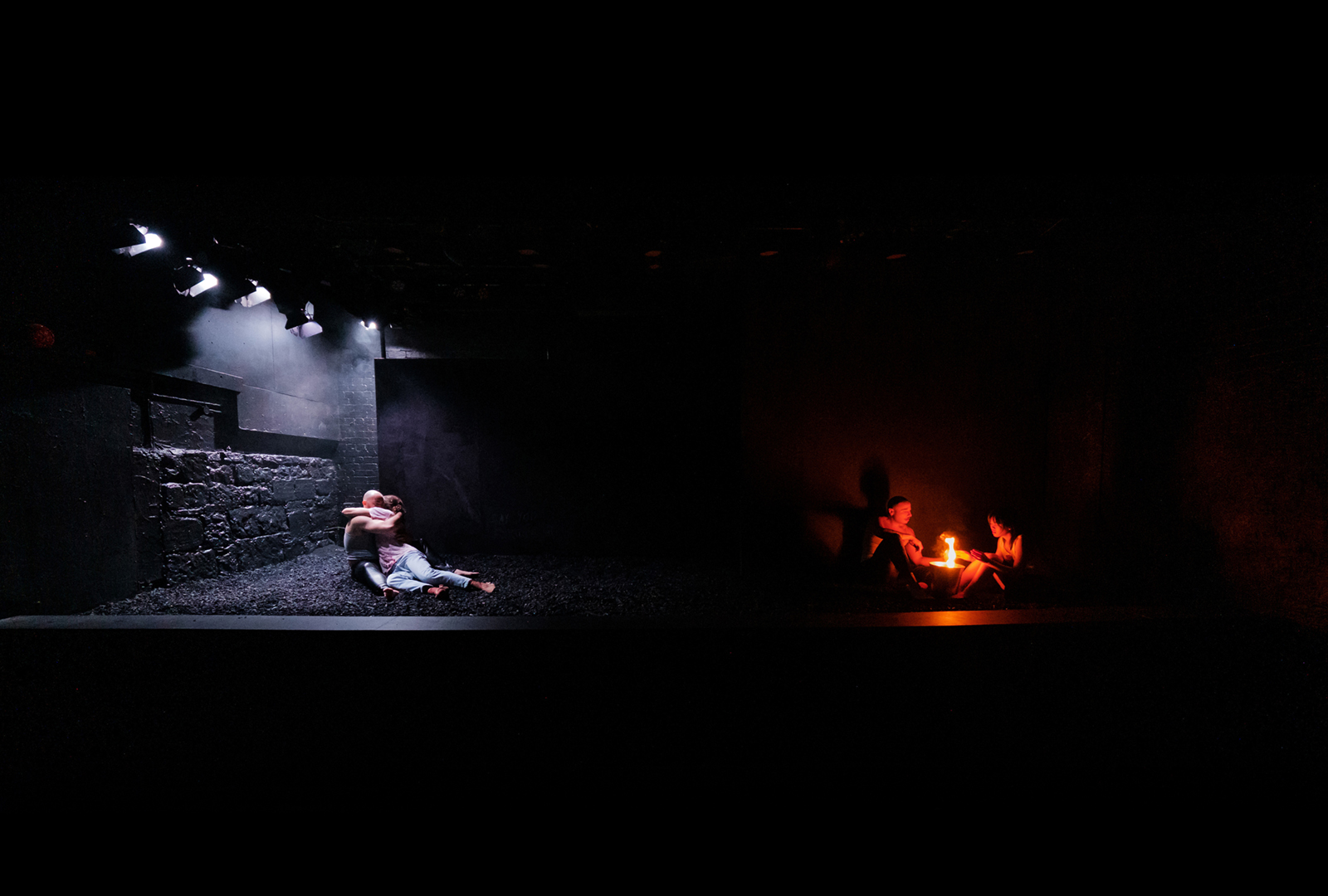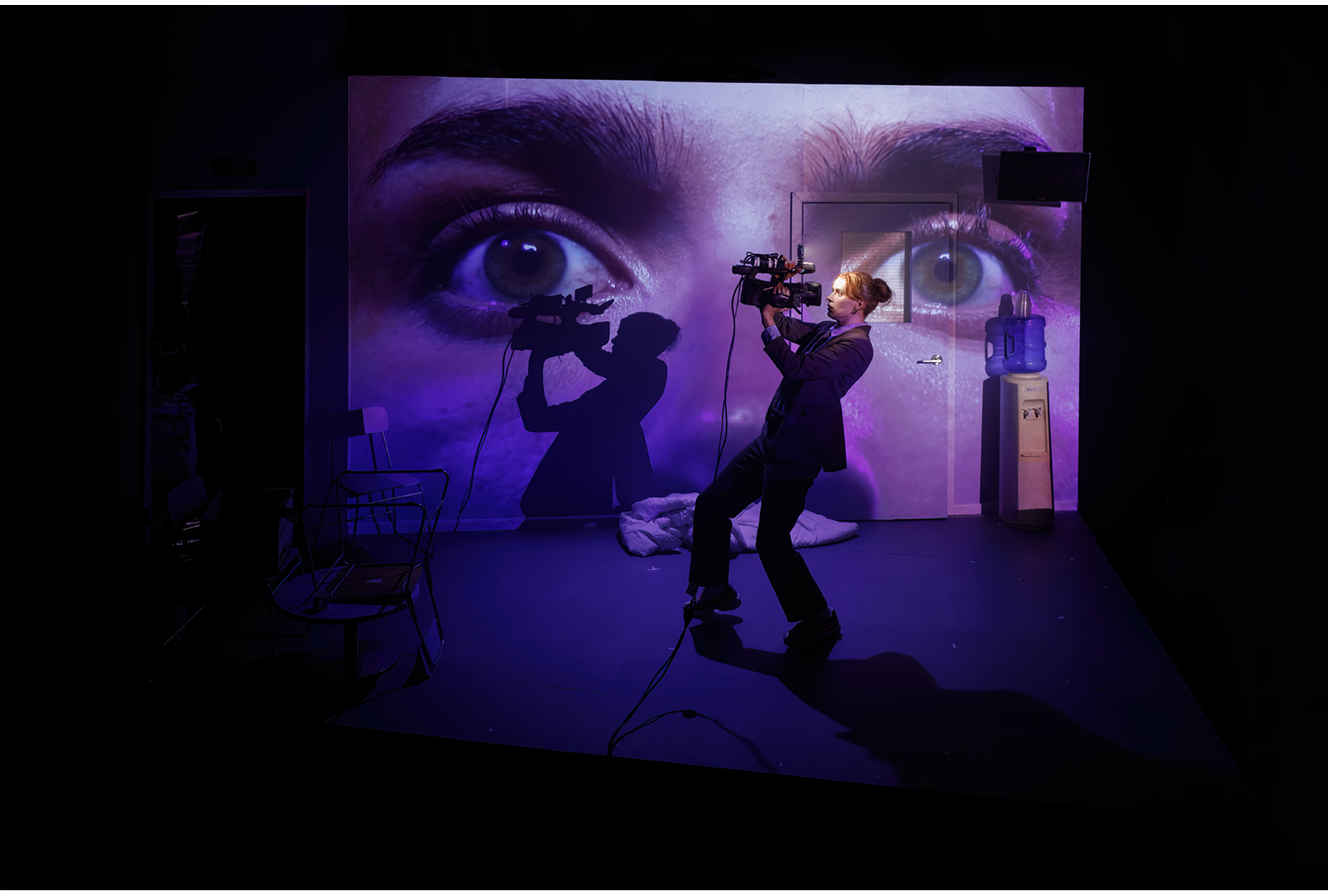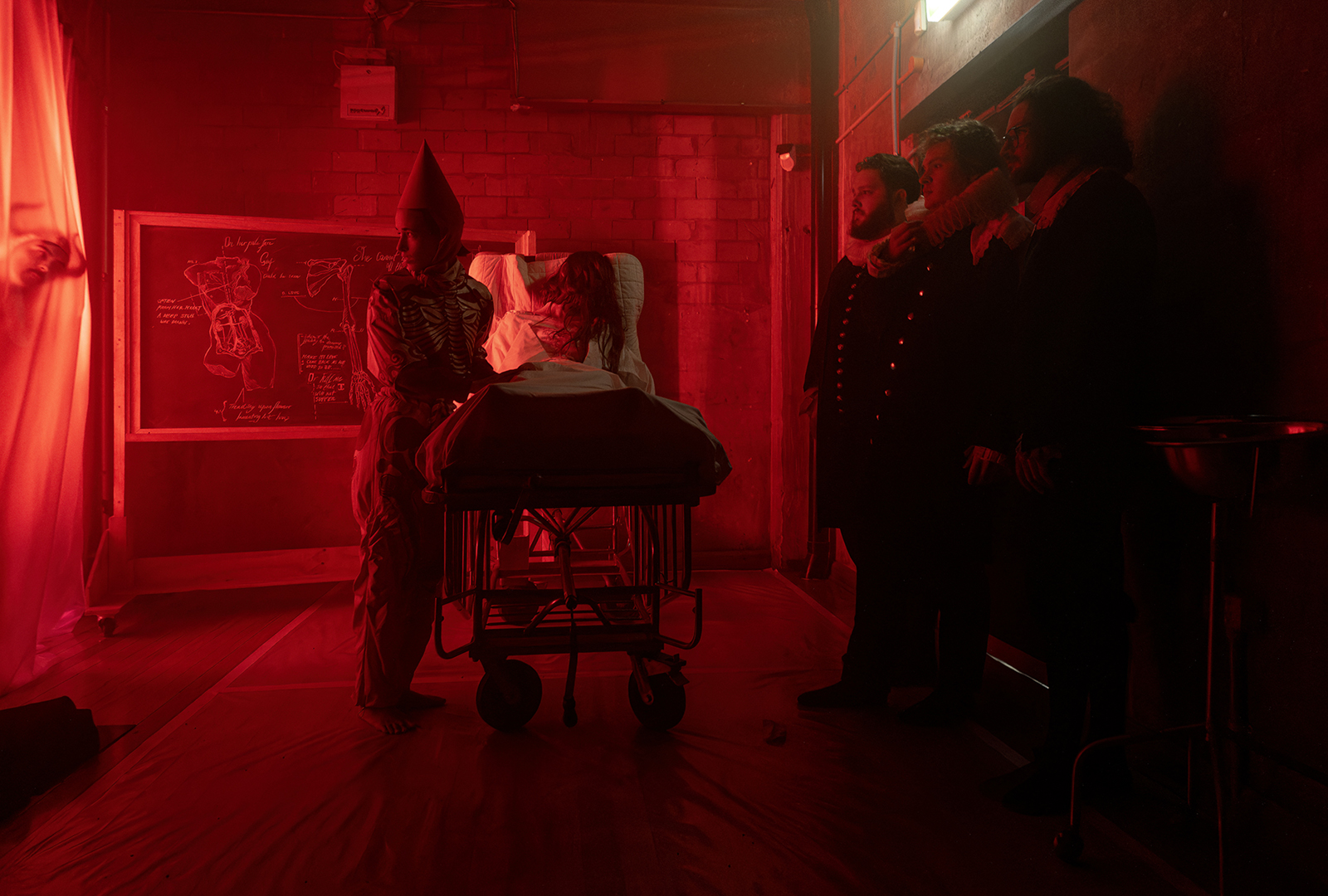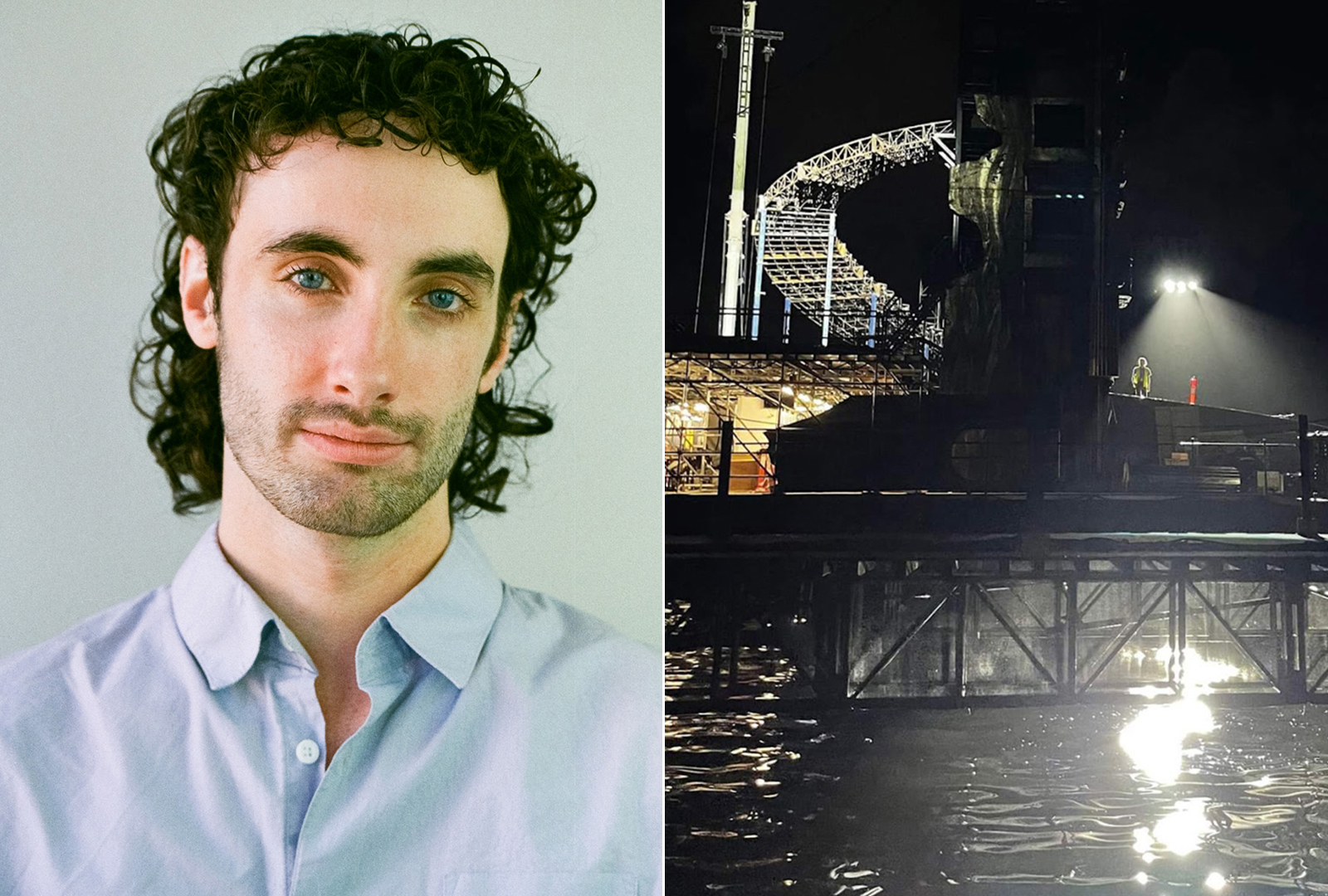After completing NIDA’s Bachelor of Fine Arts in Technical Theatre and Stage Management in 2020, Morgan Moroney has emerged as a seasoned professional lighting designer. He shares his expertise on how he adopts his unique blend of artistic vision across multiple venues within Sydney while remaining true to himself and the story.
Did you always want to pursue a creative career and how did you come across the technical side of the arts?
Honestly, ask my parents – they watched me cycle through endless creative pursuits as a child! I am very grateful they put up with me constantly casting my family members in DIY short films (which will never see the light of day) and I am amazed their eardrums are intact after my siblings and I all tried our hands at musical instruments with varying success. Through adolescence, though, I realised that I was increasingly drawn to creating the worlds around me on stage. I found myself looking up from the music stand at the lighting and stagecraft, and wanting to be on the other side of the curtain. My first gigs were designing projections for my primary school music showcases. You can imagine what I was like in drama class.
Can you tell us why you chose to do the BFA (Technical Theatre and Stage Management) at NIDA?
The course was an opportunity to get into the engine room of theatre-making and see it from a variety of perspectives. I wanted to learn about a variety of disciplines before zeroing into what interested me most, and that’s exactly what I did!
Can you talk about some of your highlights while studying at NIDA? and some skills you learnt from working with NIDA directors?
The true highlight of NIDA was the friends I made along the way… but seriously, over my time there, highlights include our trip to the Adelaide Festival and the annual Festival of Emerging Artists. I worked with a variety of directors – some Australian, some internationally-based and some students – which offered an amazing opportunity to learn about different processes and philosophies while developing my own.

Cleansed – Production picture by Robert Catto.
You mostly specialise in Lighting Design and some Video Design, has that always been your passion or was it something you developed throughout your studies at NIDA?
To me, Lighting and Video Design are closely related – video design is a form of light, after all, just a more technically and dramaturgically complex one! I knew I was interested in this realm before arriving to NIDA, but what the training allowed me to do was understand how they fit into a theatre-making process professionally, flesh out my practical skills and try my hand at them across a range of projects.
What is the process of applying for gigs and how has NIDA helped prepared you for the industry?
The industry is built on close professional relationships and word of mouth which lead to job offers. What NIDA gave me was the opportunity form a strong foundation for my own network by introducing me to a wide variety of peers and guest artists as well as providing the opportunity to undertake secondments. It is those connections that started my career.
Since graduating you have stayed very busy working on some amazing productions, which one have you been most proud off?
One career highlight has been creating a work with the Australian Brandenburg Orchestra and NIDA alumn Con Costi called Inferno. Tasked with creating a performance to entice those uninitiated to Baroque music, we conceived an immersive performance in a warehouse space, that took the audience on a journey through death, hell and heaven with live musicians, opera singers and dancers.

Collapsible – Production picture by Phil Erbacher.
Which one have you found the most challenging?
I was fortunate to be given the opportunity to work alongside Nick Schlieper as Assistant Lighting Designer for Opera Australia’s Phantom of the Opera on Sydney Harbour in 2022. Given this was an outdoor production (literally floating on the harbour), we plotted the lighting through the night and into the early hours of the morning to make the most of the darkness. The tech occurred through torrential rain, and the crew were literally pouring water out of lights every morning! Despite the challenging circumstances, it was exciting to work on a production of that scale with such a legendary creative team.
How do you approach designing lighting for different types of performances such as dramas, musicals, dance and opera productions?
The way I approach a work varies greatly by form. Over my career I’ve worked on brand-new Australian plays, centuries-old operas, dance, circus and musical theatre. Drama is primarily text-driven, and classic Western plays are often very prescriptive in stage directions for how it should look. Along with the creative team, I must analyse the purpose of these stage directions and determine if our production will adhere to them – and why. Contemporary plays are often written with little to no stage directions, with the creative team invited to fill in these aesthetic gaps. In the case of musicals and opera – the music comes first, and I spend a lot of time listening to scores to absorb them and poring over sheet music. Alongside the score is a libretto – and in the case of opera it’s often in a different language, so we work with various translations to understand the words. In a dance work, you’re collaborating with a choreographer in the much less tangible form of movement. However, despite these different ways “into” a given work, the process remains the similar for me – and that is the constant question of how to create clarity of storytelling for an audience. Regardless of the form, the creative team and I must dream together to find our version of a work – in the specific year we are making it, in a specific venue, for a specific company, with a specific group of artists.

Inferno – Production picture by Phil Erbacher.
You have worked in a variety of venues, how do you adapt your lighting design to different performance spaces?
Sydney is full of bizarre, bespoke, and tiny theatre spaces that are challenging for designers. There are of course technicalities that come with different spaces – every stage has its advantages and disadvantages that can shape a design. I’ve also worked on some productions in unconventional spaces – a train station and a barge floating on the harbour, to name a couple.Sometimes, I know from the outset that a work will tour, and design with that in mind, and sometimes shows come back for surprise future lives. I draw up plans and documentation to send shows on tour, and need to trust my workings and the talented team that take it on the road to replicate my work across the country.Designing across NIDA’s suite of different performance spaces was a good introduction to that process, coupled with training in the technical exercise of transposing lighting designs to different types of performance spaces.
Congratulations on winning the Event Engineering Lighting Design Award 2023, Australian Production Design Guild, for Cleansed. Can you share your initial reaction when you found out? What did winning this award mean to you personally and professionally?
Thank you! It is very flattering to be recognised with an award, particularly when the selection committee is a team of Australian production design peers. Cleansed was a very special show for me; it was a project nearly extinguished by COVID-19 lockdowns but brought to life again with a fearless team of artists led by Dino Dimitriadis. It was also a unique collaboration with co-lighting designer Benjamin Brockman.

Morgan Moroney ( BFA Technical Theatre and Stage Management, 2020) and Phantom of the Opera on Sydney Harbour backstage.
What advice do you have for young students out there who might be interested in pursuing a creative career? Particularly those wanting to study at NIDA?
Absorb as much art of any discipline as you can: everything you consume helps define your taste and personal aesthetic. Get involved in any kind of theatre - everyone you meet can help you learn something new.
What is next for you Morgan?
I’m collaborating on a new work early next year with ATYP for Sydney Festival, followed by another two new works for Belvoir. Then, some more opera!
To know more about Morgan’s work, please click here.
